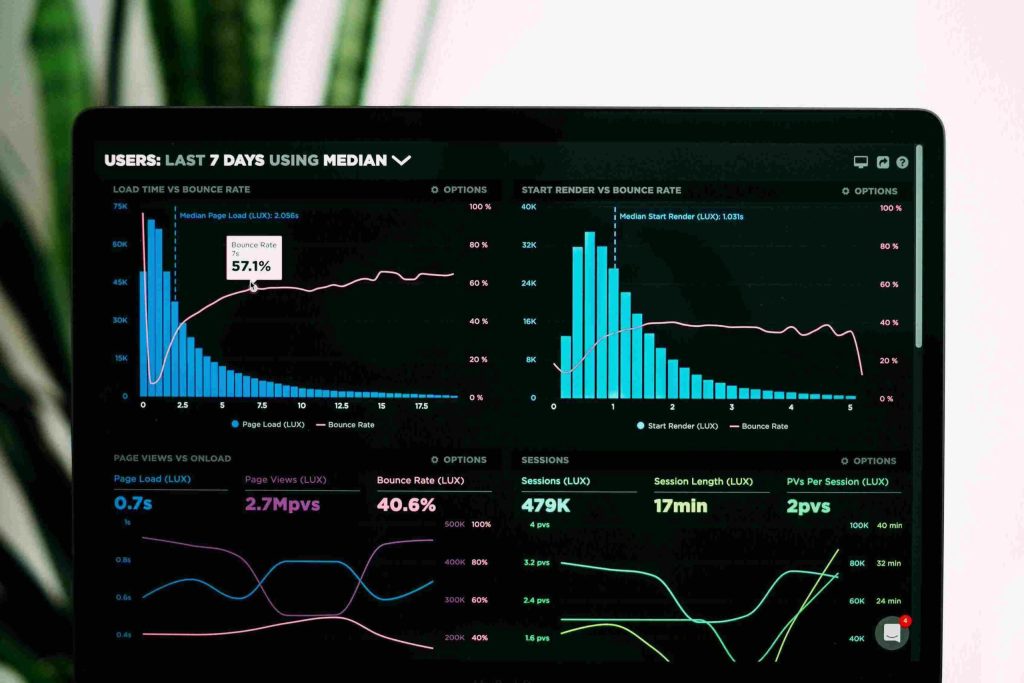Every professional in social media promotion should know how to write a report. This document allows you to evaluate the work results based on the collected and presented indicators.
Read Creating a Marketing Strategy that Works: Benefits, Steps, Tools
The content of the social media report depends on the critical tasks set but generally has a typical structure which you will learn in this article.
Let’s dig in!
SMM Report and Its Benefits
Social media report is a document that shows the client the progress of the work done on social networks in a convenient and understandable form. The report lets you objectively assess the business results of working with the agency. A competent SMM specialist report contains critical progress indicators, conclusions, and an action plan over a certain period.
The report helps the client see an accurate picture of what is happening in the communities. Remember that the key metrics and figures in the report are put in the brand marketing strategy at the beginning of the work. And if this work has been done well, the social media report will give you a ton of advantages.
Advantages of creating reports
✔️ Creating relevant content for your audience. During your report, you’ll need to collect information on metrics such as the ideal length of posts and the most exciting topics for your followers. The data you get will allow you to create more compelling content for each social platform.
Read 6 Ways to Come up with Content Ideas Using Determ

✔️ More intelligent scheduling. Working on your SMM reports will give you insight into what times and days of the week are best for interacting with your current and potential customers. You’ll also learn which topics generated the most significant audience response on any given day.
Understanding when and why users interact with you (e.g., during a work break, on the weekend, or at the end of the day) will allow you to fine-tune your customer outreach for maximum impact.
✔️ Target platform strategy. Each social media platform has unique features and characteristics. It follows that the strategy must be tailored to the audience of that particular social network. Effective social interaction is more than just broadcasting information to your followers. Instead, it requires users to build relationships through the shared culture of each platform.
✔️ Maintaining a brand voice. While content and delivery on each social platform should differ, you must maintain a consistent tone of voice. Social media reporting ensures that your corporate identity remains constant across all social media platforms.
Read Product Branding: How to Give Identity to Your Product
✔️ Individual social media tracking and measurement. Each brand has unique social media objectives and goals. A social media report is tailored to these needs, based on the variety of data available, to align your company’s social media strategy with your goals.
What Metrics to Include
Now that you already understand what an SMM report is and what benefits it gives you, it’s time to think about what data you need to submit. Social media platforms have many metrics that can be overwhelming, not to mention all sorts of data from third-party social media tools.
However, knowing your goal can help you focus on specific metrics showcasing your chosen niche’s strengths and weaknesses. Below are some basic ones you can incorporate into your work.
Read How To Do Social Media Competitor Research

Overview of basic metrics
? Content volume. Content volume is one of the easiest ways to demonstrate to a client that you’re not slacking. In addition, content volume is a reasonably popular metric in social media reporting that, when combined with others, allows you to analyze your content distribution efforts.
? Coverage. This metric allows you to understand the size of your audience.
? Engagement. Engagement allows you to analyze the number and quality of interactions your accounts and posts receive. It’s one of the most critical metrics for growth since the more interactions you get, the more attention your brand gets.
? Audience. Social media platforms give you a lot of information about your audience. So you can find out who’s participating in the conversation, where your customers are from, when they’re active, what languages they speak, and more.
? Clicks and traffic. One of your main goals is to get customers to your website. And one of the strongest proofs of your success here is clicks on your general links and social media traffic.
? Social listening. You can include social listening data in your regular ongoing report. For example, brand monitoring data works well with engagement and reach data. You can also produce reports for special occasions, such as market research and campaign monitoring reports.
Read Social Listening Metrics: What and How to Track
Convenient Social Media Tools
So, once you’ve figured out what information to include in your SMM report, you can move further on what aids you need to use to collect that data.
- Meta Business Suite. It is an effective tool for getting the necessary data for Facebook and Instagram
- LinkedIn Analytics. It provides an exciting feature for social media reporting. For example, selecting the “Competitor Analytics” page lets you see how you and your nine competitors compare.
- Hootsuite Analytics. It allows you to collect data and generate reports for multiple Facebook, Twitter, Instagram, and LinkedIn profiles from one dashboard.
- Determ tracks relevant brand mentions across the web and social media in real-time. It uses sophisticated algorithms and intelligent analytics to identify relevant content and present it in a way that provides insight and adds value to business executives and PR professionals everywhere.

Best Practices for Creating Social Media Reports
Before using any media monitoring tool, you need to know the basics. So what should you include in your social media report?
- Identify your audience. Before you get statistics from reporting tools, you must define your target audience. That way, you can tailor your report to their needs.
- Set goals. For any SMM report, it’s essential to define the questions that must be answered clearly. It’s convenient to use the SMART schema to ask the right questions:
? Specific. What data and for how long should be included in the SMM report?
? Measurable. How exactly will you track and analyze the results?
? Achievable. Set achievable goals.
? Relevant. Make sure you have all the resources you need.
? Timed. Set a timeline and stick to it.

Suppose you’re new to SMM, and it’s challenging to start analyzing data reporting. In that case, you can use the Best Writers Online writing service review website to find an experienced professional to help you first.
Next steps
- Keep track of important metrics. The content of your SMM report depends on your needs and the data the social network provides. There can be a lot of information, but you need metrics for a specific task.
- Provide сontext. Metrics by themselves mean nothing. Add context to help you better understand your SMM report. Remember that clients may panic if they are shown negative feedback when they don’t realize they are only 2% in their current situation. For example, compare your results to previous months. It will show your social media progress over time. Then match the data to your goals: show how your efforts impact business performance.
- Create visual aids. Numbers can be dry, so liven them up a bit. If you want your social media report to be readable, visualize the numbers. For example, graphs make the data much easier to read.
- Summarize and outline the next steps. When you write your social media report, you should look ahead. Thus, at the end of the document, summarize, conclude, and outline the next steps. For example, you can make a list of Influencers you plan to interact with in the future.
- Use AI. There’s no harm in using help to get the wanted results. Many tools offer AI aid in interpreting metrics and enriching their reports. For example, media monitoring tool has an AI assistant called Synthia that provides a summary of your tracked mentions and offers actionable tips for future marketing activites. You can easily use it as the basis of your report.
Social Media Report Example
When preparing an SMM report, you can use a ready-made template to visualize the collected data, which you can download from various services. A typical SMM report template consists of the following sections:
- General statistics
- Impression statistics
- Data on advertising campaigns
- Individual ads effectiveness analysis
- Statistics of group visits
- Demographics of the target audience
- Post analysis
- Statistics of user reactions and conversations
- Click-through and conversion data
- Conclusion and further action plan
You can also use the templates of basic, advanced, or competitive reports with Determ.
Conclusion
It is essential to be able to write social media reports for any professionals whose activities are related to promotion in social networks. Competently compiled social media report helps to organize and present the statistics collected. Furthermore, based on the data analysis, you can evaluate the results and efficiency of working with social networks and choose a strategy for further promotion.
Frank Hamilton has been working as an editor at custom writing company Trust My Paper. He is a professional writing expert in such topics as blogging, digital marketing and self-education. He also loves traveling and speaks Spanish, French, German and English






